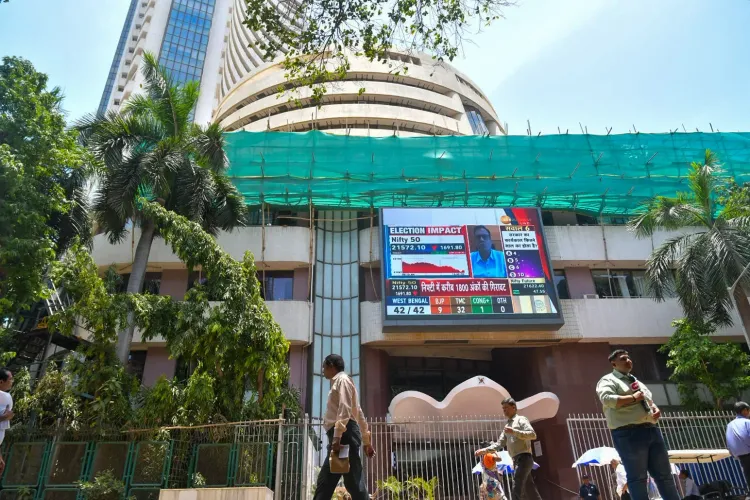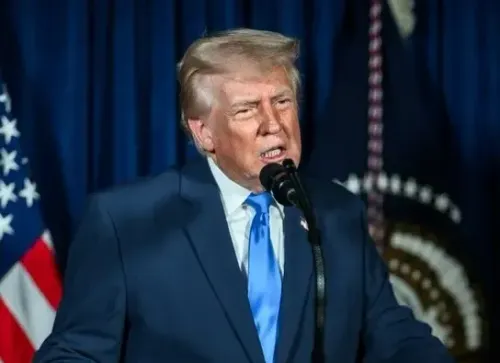Why Did Sensex and Nifty Open Lower Amid US Tariff Concerns?

Synopsis
Key Takeaways
- 25% tariff on imports announced by the US.
- Sensex and Nifty opened lower, indicating market volatility.
- Major sectors facing declines include auto, energy, and pharma.
- Investors encouraged to focus on domestic consumption.
- Upcoming negotiations in mid-August could alter current tariff rates.
Mumbai, July 31 (NationPress) The Indian stock market's primary indices opened lower on Thursday following the announcement from US President Donald Trump regarding a hefty 25 percent tariff on imports from India.
As of 9:27 am, the Sensex had declined by 487 points or 0.60 percent to reach 80,994, while the Nifty fell 140 points or 0.57 percent to 24,717.
Midcap and smallcap stocks also experienced selling pressure. The Nifty midcap 100 index was down 457 points or 0.79 percent at 57,484, while the Nifty smallcap 100 index dropped 100 points or 0.55 percent to 18,037.
Dr. VK Vijayakumar, Chief Investment Strategist at Geojit Investments Limited, commented, "From an investor's viewpoint, it is critical to recognize that the 25 percent tariff may lessen following negotiations scheduled to begin in mid-August. The tariff levied against India is considerably higher than those established in trade agreements with other nations."
He described this as a typical "Trumpian strategy" aimed at securing better deals from India on various fronts, eventually settling at a tariff rate close to 20 percent or lower.
"The Nifty is unlikely to dip below the support level of 24,500. Investors should consider purchasing on dips, particularly focusing on domestic consumption sectors, especially key private sector banking names, telecom, capital goods, cement, hotels, and select auto manufacturers that performed well in Q1," he added.
All sectoral indices showed losses in early trading, with auto, energy, pharma, PSU bank, financial services, metal, realty, and PSE being the most affected.
Among the Sensex constituents, M&M, Bharti Airtel, Reliance, Infosys, HCL Tech, Titan, SBI, TCS, ICICI Bank, Trent, L&T, HDFC Bank, and NTPC were the biggest losers, while Eternal, Power Grid, Tata Steel, ITC, and HUL emerged as top gainers.
In terms of institutional actions, foreign institutional investors (FIIs) continued their selling trend for the eighth consecutive session on July 30, offloading equities valued at Rs 850 crore. In contrast, domestic institutional investors (DIIs) sustained their buying spree for the 18th straight session, acquiring equities worth Rs 1,829 crore on the same day.










